As I write this, we have weather warnings for gales all next week. With climate change, high winds and rough weather are becoming a regular fact of life for us here in the UK.
High winds wreak havoc in the garden, and there is nothing worse than looking out of the window to see your bird table on the floor. For starters, it's a fad to keep having to pick it up. And eventually, if it keeps falling over, it's going to get damaged.
So this week we are going to take a quick look at the best ways to fix your bird table securely to the ground to save you time and prevent damage.
How to Secure a Bird Table to the Ground
Before we look at securing your table to the ground, there are a couple of other things you should bear in mind.
Choosing the Right Bird Table.
If you are buying a new bird table, choosing one that is less likely to blow over and easier to fix to the ground will save you time and trouble in the long run.
- Choose a sturdy, reasonable heavy table, light flimsy models will blow over at the first puff of wind.
- If it is to stay upright, the base of your bird table should be wider than the top. It should be heavy too. Some models offer twist-out feet for extra stability.
- Flat feet. Look for flat feet on a new bird table. These offer extra stability and will make it easier to secure the table to the ground.
- Not too tall. A tall bird table can make an impressive garden feature. But the taller the table is, the more likely it is to blow over. If you have plenty to shelter in your garden, then you could be okay with a very tall bird table. If your garden is more exposed, stick to something more petite. Most birds are perfectly happy feeding on a table 4 or 5 feet tall.

Choose the Right Bird Table Position
Before you decide where to put your bird table, take a moment to think about how the wind blows through your garden. Most gardens have windy spots and more sheltered areas.
If you can choose a spot sheltered from the wind for your bird table, it will be less prone to falling over. The birds prefer to eat in more sheltered areas too.
It seems obvious to say, but we will because we have seen it done: don't place your bird table on a slope!
Preparing the Site
Once you have chosen where you are going to put your new bird table, prepare the site.
Make sure the site is level. Even minimal unevenness can make your bird table unstable, especially if its a tall one. Check your site with a spirit level and if its uneven level it off.
Cut or remove the grass. Most people choose to place their bird table on the lawn. If you are going this route give the grass a really close cut before putting the table in place. This will help with stability. Some people even take the turf off directly under the table and replace it with a patch of sand or gravel. This will mean you don't need to move the table every time you cut the grass.
Securing Your Bird Table
If you are placing your bird table on the lawn or in a border the best way to fix it to the ground is with anchoring pegs.

These are cheap and simple to use. Just push the anchor pegs into the ground over the legs of your table.
They are also easy to pull up when you need to move your table, for grass cutting, weeding, or any other reason.
These pegs do the job with minimal cost or fuss and are a no-brainer really.
Tackling Hard Surfaces
Anchoring pegs work a treat for securing your bird table in a lawn or border. But what if you have a courtyard or decked garden?
It's going to be even more important to secure the table because it's going to suffer more damage if it falls. But securing it is much more difficult.
Your only option really is to bolt the table to the ground. This is a bit of a DIY task, and it means the position of your bird table will be permanently fixed; you have no option to change its position once it's bolted in.
Driving bolts through paving slabs or decking will also damage the surface. This is something you might not want, and if you are renting, your landlord certainly won't.
So maybe, if you have a decked or paved garden, the traditional, freestanding wooden bird table isn't your best option. Luckily, there are plenty of other attractive and practical bird-feeding options that could work well.
- A wall or fence-mounted bird table will be secure in even the highest winds once correctly installed.
- A hanging bird table can be a great option if you have a sturdy tree. Again, once it is properly tied into place, it will not fall in the wind, though it sure will rock around a good bit!
- A pole-mounted feeding station or the Rosewood Deluxe Station can be placed in the centre of a large planter or container and will make an attractive freestanding feature without damaging your paving or decking.
Conclusion: It's Best to Secure Your Bird Table to The Ground with Anchor Pegs
So, in this article, we have seen that it's straightforward to fix the problem of an upturned bird table by choosing the right table, picking the correct position, preparing the ground, and getting a set of anchor pegs.
We've also seen that lawn is the best surface for a freestanding bird table. If you have a decked or paved garden, it will be difficult to fix your table to the ground without damaging your hard landscaping. So it's better to choose another feeding option for your garden.
We hope you have found this article interesting and useful. If you have a suggestion or question, we would love to hear from you. Please leave us a comment below.
For advice and information, take a look at our garden bird blog here.
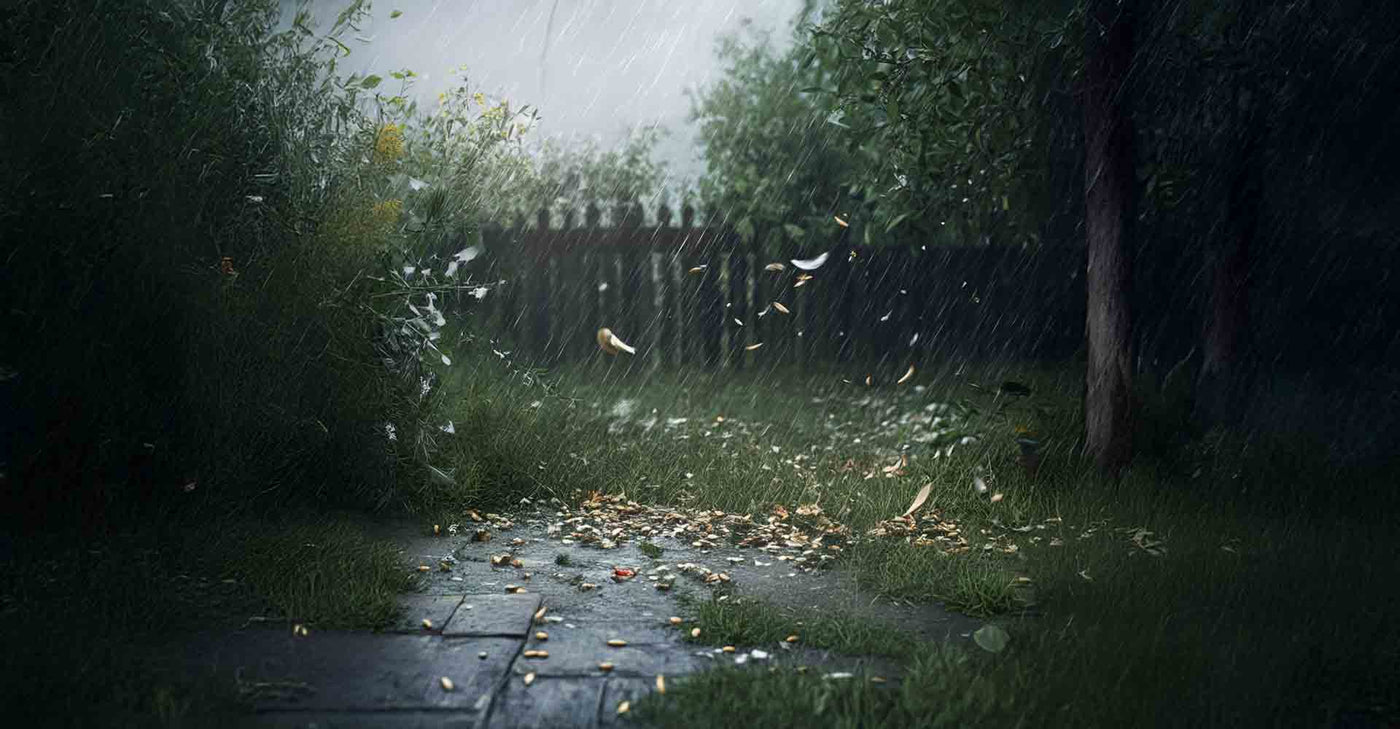



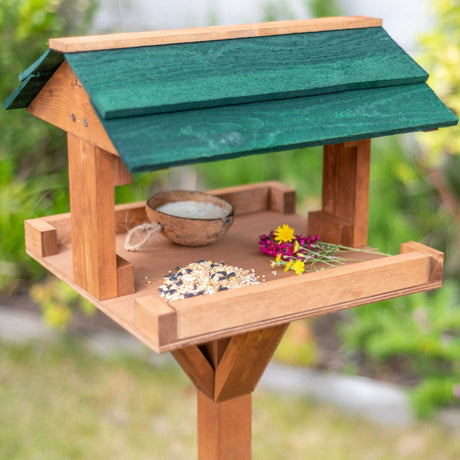
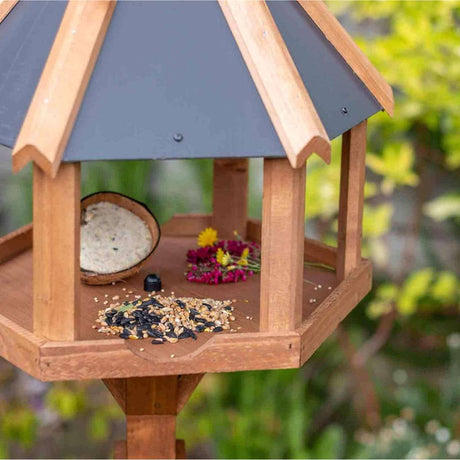
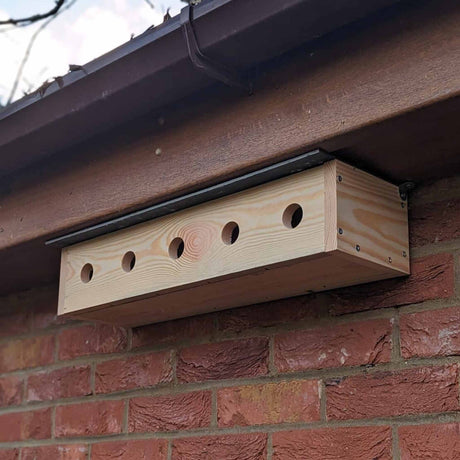
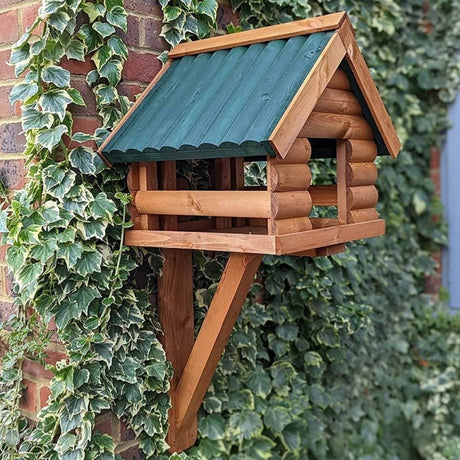
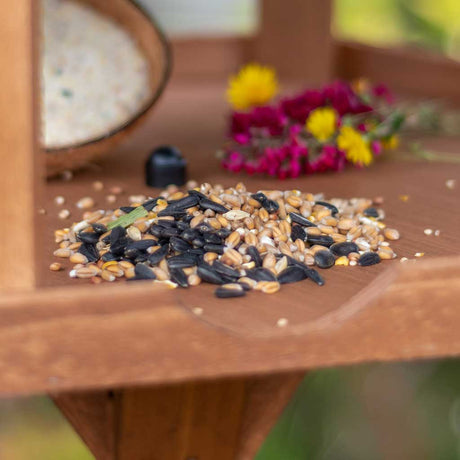
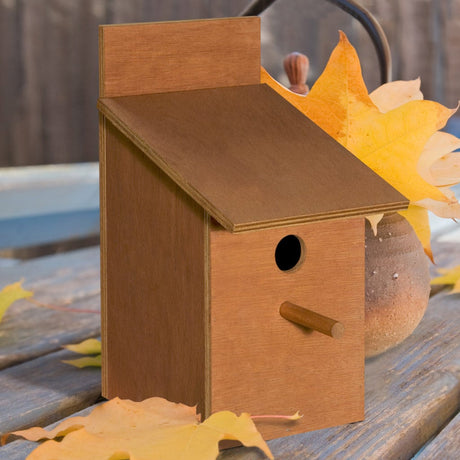

2 comments
If free-standing bird tables were available with optional feet and a longer main support, a ‘metpost’ will hold it firmly into the ground.
I live in rented accommodation. The garden is of concrete, covered in gravel so I cannot use anchor pegs or bolt my bird feeder to the ground. The solution suggested to me is sandbags but I have NO idea how heavy each sandbag should be (assuming I use 4). Can you please help me with this. What should the overall weight be in order to anchor the feeder in high winds (the garden is very exposed)